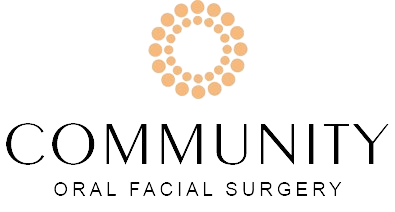DOWNLOAD E-BOOK FOR FURTHER INFORMATION
Anesthesia in dentistry encompasses various techniques to manage pain and anxiety during dental procedures, ensuring patients undergo treatments comfortably and safely. Local anesthesia, the most common type, numbs specific mouth areas for procedures like fillings and root canals. Nitrous oxide (laughing gas) induces relaxation and reduces anxiety, making it suitable for patients of all ages. Conscious sedation provides deeper relaxation through oral or intravenous medications, ideal for longer or more complex treatments. General anesthesia, administered in hospitals, renders patients unconscious for extensive surgeries.
The importance of anesthesia lies in its ability to alleviate pain, minimize patient anxiety, and facilitate effective dental care, ensuring patients receive necessary treatments without discomfort or fear, ultimately promoting better oral health and a positive dental experience.
Who Can Benefit From Anesthesia ?
- Individuals who experience significant anxiety or fear related to dental visits can benefit from anesthesia to help them relax and undergo treatment comfortably.
- Children and young patients with difficulty sitting still or who cannot cooperate during dental treatments can benefit from anesthesia to ensure a calm and manageable environment for necessary procedures.
- Individuals who are particularly sensitive to pain or discomfort during dental procedures can benefit from anesthesia, which minimizes discomfort and ensures a pain-free experience.
- Individuals with physical or developmental disabilities that may affect their ability to tolerate dental procedures can benefit from anesthesia to facilitate safe and effective treatment.
- Anesthesia can benefit patients undergoing extensive dental surgeries, such as wisdom tooth extractions, dental implant placements, or jaw surgeries, by managing pain and ensuring the success of complex procedures.
- Individuals undergoing multiple dental procedures in a single visit can benefit from anesthesia to ensure comfort and efficiency throughout treatment.
- Patients with a heightened gag reflex, which makes certain dental procedures uncomfortable or challenging, can benefit from anesthesia to minimize discomfort and enable effective treatment. Call us to learn more.
Types of Anesthesia Used in Dentistry
Local Anesthesia
- Local anesthesia, administered via injection or topical application, numbs the specific area of the mouth where the dental procedure will be performed.
- It provides effective pain relief without affecting consciousness, allowing dentists to perform treatments like fillings, root canals, and tooth extractions with minimal discomfort for the patient.
Nitrous Oxide
- Nitrous oxide is a mild sedative delivered through a mask placed over the nose. It induces a relaxed and euphoric state while reducing anxiety and discomfort during dental procedures.
- It produces a rapid onset of relaxation, adjusts easily during treatment, and allows patients to remain conscious and responsive.
Conscious Sedation
- Conscious sedation involves administering medications orally or intravenously to induce a relaxed, drowsy state while maintaining consciousness.
- It reduces anxiety significantly, making it suitable for patients with dental phobia or for longer and more complex procedures.
General Anesthesia
- General anesthesia is reserved for extensive dental surgeries or procedures where the patient needs to be unconscious. It is administered by an anesthesiologist in a hospital setting.
- It ensures complete unconsciousness and pain relief, particularly for patients with special needs or those undergoing complex dental treatments.
The Importance of Anesthesia
Pain Management
One primary reason for using anesthesia in dentistry is to manage pain effectively. Dental procedures such as dental implants, fillings, root canals, wisdom teeth extractions, and gum surgeries can cause discomfort without pain relief. Local anesthesia, the most common type used, blocks pain signals in the nerves of the treatment area, ensuring that patients remain comfortable throughout the procedure.
Anxiety Reduction
Dental anxiety is a common concern for many patients, leading to avoidance of dental visits and neglect of oral health. Anesthesia techniques like nitrous oxide (laughing gas) and conscious sedation help alleviate anxiety and promote relaxation during dental treatments. This improves patient experience and encourages regular dental care, ensuring optimal oral health outcomes.
Facilitating Complex Procedures
Anesthesia is crucial in ensuring patient comfort and cooperation during complex dental procedures. Procedures such as dental implants, wisdom tooth extractions, and jaw surgeries often require extended time in the dental chair and precise tissue manipulation. General anesthesia or conscious sedation allows dentists to perform these procedures efficiently and safely, minimizing patient discomfort and ensuring thorough treatment.
Enhancing Treatment Precision
Anesthesia in dentistry enables dentists to work with greater precision and accuracy. By minimizing patient movement and discomfort, anesthesia ensures that dental professionals can focus on performing procedures with meticulous attention to detail. This is particularly important for intricate procedures like crown placements, periodontal surgeries, and orthodontic adjustments.
Access to Care for Special Needs Patients
Patients with special needs, severe dental phobia, or medical conditions that make them unable to tolerate traditional dental procedures can benefit significantly from anesthesia. Sedation or general anesthesia provides these patients access to necessary dental care, ensuring their oral health needs are met in a safe and controlled environment.
Safety and Controlled Environment
Anesthesia in dentistry is administered under controlled conditions by trained professionals, ensuring patient safety throughout the procedure. Dentists and anesthesiologists carefully monitor vital signs and adjust anesthesia levels to maintain optimal patient comfort and safety.
Anesthesia is vital in modern dentistry, ensuring patients receive necessary dental treatments comfortably and safely. Visit Community Oral Facial Surgery at our multiple locations: 420 1st St N, Alabaster, AL 35007; 901 Leighton Ave #401, Anniston, AL 36207; 101 Trojan Drive, Carrollton, GA 30117; and 817A Riverbend Dr, Gadsden, AL 35901, to learn more about our anesthesia options and start your journey towards a healthier, happier smile. Schedule your appointment conveniently online or by calling (205) 208-0167, (256) 236-6090, (770) 832-8819, or (256) 547-5731.



